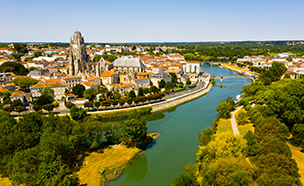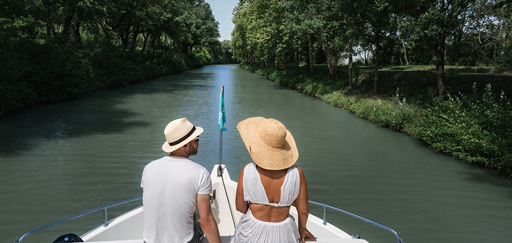With 8,500 kms of canals and rivers great and small (of which 6,700 are managed by the organisation Voies Navigables de France www.vnf.fr), France can rightly claim to be Europe’s premier inland waterway network. And it’s the only such network to boast two sea coasts: the Atlantic and the Mediterranean.
From the late Middle Ages, steps were taken to start managing riverbanks and waterways to avoid flooding, and to make it easier to transport both people and livestock. It’s even believed that in Germany, Charlemagne tried to construct a canal linking the Rhine and the Danube. But it was towards the end of the 17th century that the real masterpieces such as the Canal du Midi began to be built, and only one hundred years later that the first “tourists” – from the privileged classes, as you would expect, and few and far between – discovered the idyllic pleasures of France’s waterways. The start of what we now know as “canal boat holidays” came about in the Roaring Twenties. The first guide to navigation on inland waterways was published in 1927, and in 1934 the director Jean Vigo produced L’Atalante, a cult film that tells the story of a young woman who’s in love with a bargee living on a barge. World War II put an end to all this fascination with inland waterways, and they were forgotten about in the new craze for beaches. It was at the end of the 1960s that local associations began to take an interest in the neglected canals. With the help of the English, who were the experts in canal boat holidays, the first houseboat rental companies opened. So that’s how what we call water-based tourism or sometimes “blue” tourism came about, and nowadays it’s really taken off. So why not join in? Now’s the time: bookings for the 2015 season are already available on the Locaboat website.

















![Home_GB[1]](https://www.locaboat.com/wp-content/uploads/2025/02/Home_GB1.png)



